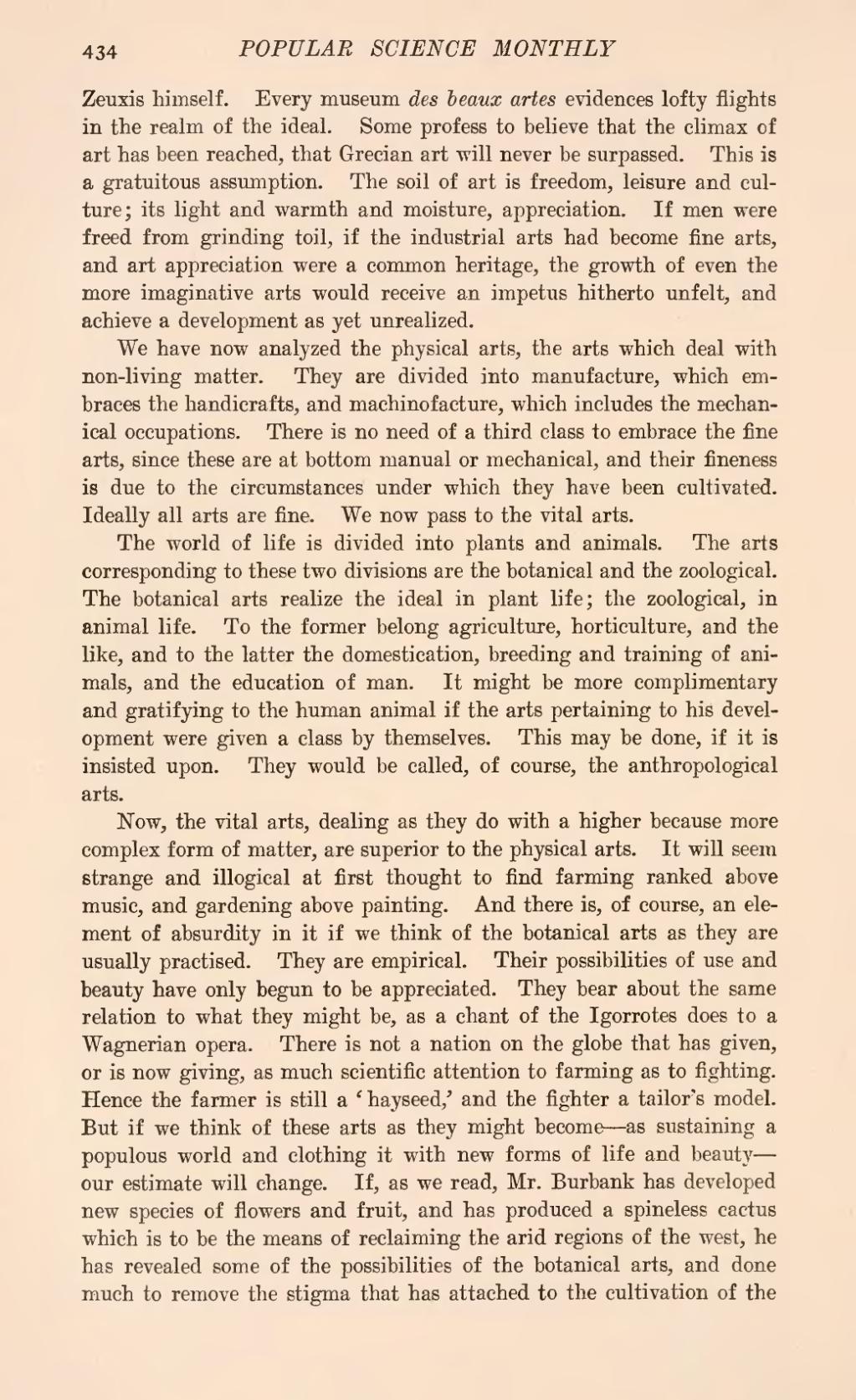Zeuxis himself. Every museum des beaux artes evidences lofty flights in the realm of the ideal. Some profess to believe that the climax of art has been reached, that Grecian art will never be surpassed. This is a gratuitous assumption. The soil of art is freedom, leisure and culture; its light and warmth and moisture, appreciation. If men were freed from grinding toil, if the industrial arts had become fine arts, and art appreciation were a common heritage, the growth of even the more imaginative arts would receive an impetus hitherto unfelt, and achieve a development as yet unrealized.
We have now analyzed the physical arts, the arts which deal with non-living matter. They are divided into manufacture, which embraces the handicrafts, and machinofacture, which includes the mechanical occupations. There is no need of a third class to embrace the fine arts, since these are at bottom manual or mechanical, and their fineness is due to the circumstances under which they have been cultivated. Ideally all arts are fine. We now pass to the vital arts.
The world of life is divided into plants and animals. The arts corresponding to these two divisions are the botanical and the zoological. The botanical arts realize the ideal in plant life; the zoological, in animal life. To the former belong agriculture, horticulture, and the like, and to the latter the domestication, breeding and training of animals, and the education of man. It might be more complimentary and gratifying to the human animal if the arts pertaining to his development were given a class by themselves. This may be done, if it is insisted upon. They would be called, of course, the anthropological arts.
Now, the vital arts, dealing as they do with a higher because more complex form of matter, are superior to the physical arts. It will seem strange and illogical at first thought to find farming ranked above music, and gardening above painting. And there is, of course, an element of absurdity in it if we think of the botanical arts as they are usually practised. They are empirical. Their possibilities of use and beauty have only begun to be appreciated. They bear about the same relation to what they might be, as a chant of the Igorrotes does to a Wagnerian opera. There is not a nation on the globe that has given, or is now giving, as much scientific attention to farming as to fighting. Hence the farmer is still a 'hayseed,' and the fighter a tailor's model. But if we think of these arts as they might become—as sustaining a populous world and clothing it with new forms of life and beauty—our estimate will change. If, as we read, Mr. Burbank has developed new species of flowers and fruit, and has produced a spineless cactus which is to be the means of reclaiming the arid regions of the west, he has revealed some of the possibilities of the botanical arts, and done much to remove the stigma that has attached to the cultivation of the
